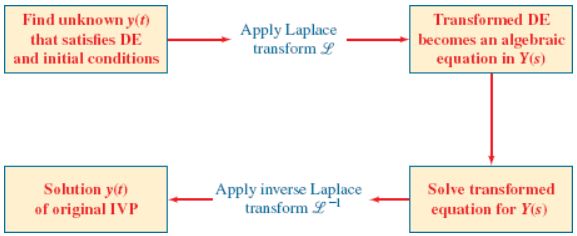MTH 267 - Differential Equations Module 6 Topics
1/21
Earn XP
Description and Tags
Laplace Transforms
Name | Mastery | Learn | Test | Matching | Spaced |
|---|
No study sessions yet.
22 Terms
Transforms
operations ‘transforms’ 1 function into another
e.g. derivatives, integral
Linearity Property
“L operating on a linear combination of two differentiable functions is the same as the linear combination of L operating on the individual functions”
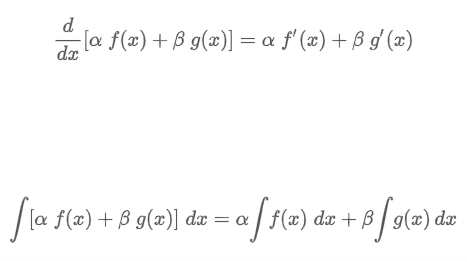
Definite Integral
A definite integral of f w.r.t. 1 variable leads to a function of the other variable
e.g. transform function f of the variable t into a function F of variable s

Integral Transforms
“Interval of integration is the unbounded interval [0, ∞). If f(t) is defined for t ≥ 0, then the improper integral is defined as a limit”
Convergent: limit & integral DOES exist
Divergent: limit & integral does NOT exist

Kernel
k(s, t)
Laplace Transform
Note: also denoted as ℒ{f(t)}
Application: use a lowercase letter to denote the function being transformed and the corresponding capital letter to denote its Laplace transform
ℒ{f(t){ = F(s)
ℒ{g(t){ = G(s)
ℒ{g(i){ = I(s)
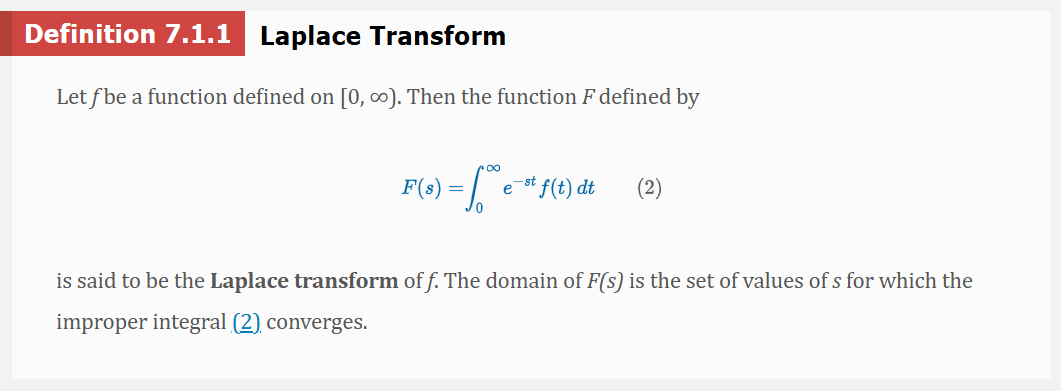
Shorthand limit notation
limb→∞()|0b become |0∞

Linear Transform
“Suppose the functions f and g possess Laplace transforms for s > c1 and s > c2 , respectively. If c denotes the maximum of the two numbers c1 and c2 then for s > c and constants α and β we can write…”

Transform of Basic Functions
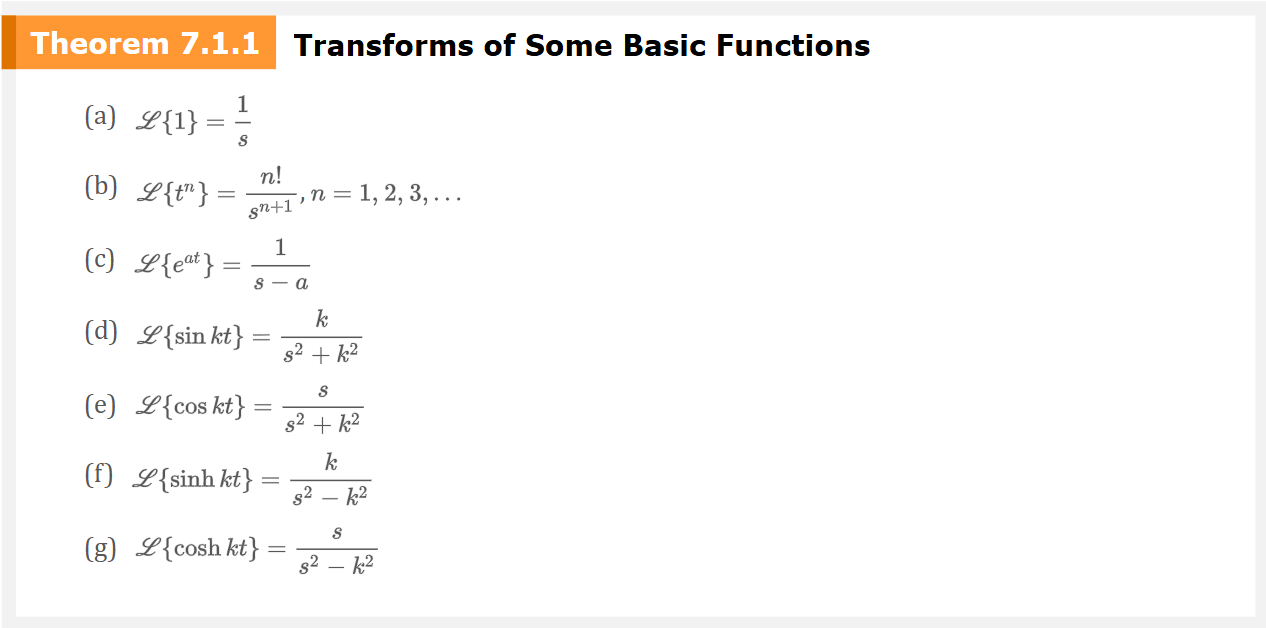
Existence of ℒ{f(t)}
“Sufficient conditions guaranteeing the existence of ℒ{f(t)} are that f be piecewise continuous on [0, ∞) and that f be of exponential order for t > T.”

Exponential Order
If f is an increasing function, then the condition |f(t)| ≤ Mect for all t > T simply states that the graph of f on the interval (T, ∞) does not grow faster than the graph of the exponential function Mect , where c is a positive constant.

Behavior of F(s) as s → ∞

Inverse Laplace Transforms
Since ℒ{f(t)} = F(s), then f(t)=ℒ-1{F(s)}
Some Inverse Transforms
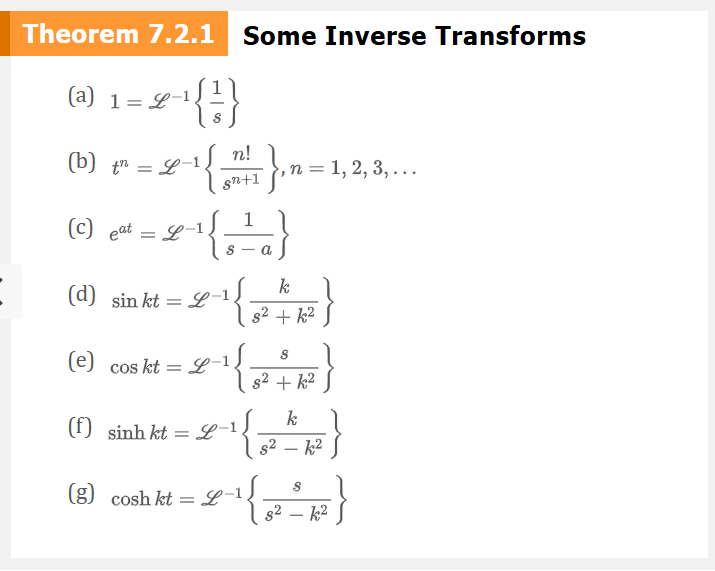
Linearity of the Inverse Laplace Transform
“Suppose the functions f(t)=ℒ-1{F(s)} and g(t)=ℒ-1{G(s)} are piecewise continuous on [0, ∞) and of exponential order. Then for constants α and β we can write…”

Transforms a Derivative Proof

Transforms 1st Derivative

Transforms 2nd Derivative

Transforms 3rd Derivative

Transform of a Derivative (Theorem)
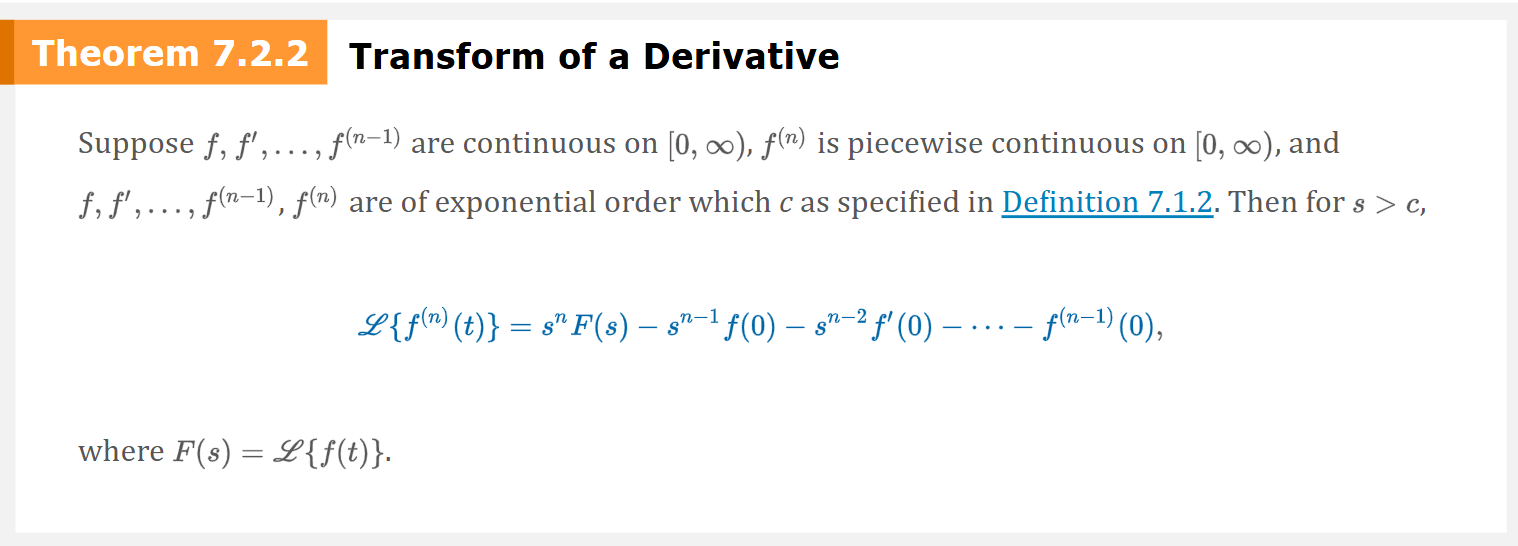
ODE w/ Laplace Transforms
The Laplace transform of a linear differential equation with constant coefficients becomes an algebraic equation in Y(s).
P(s) = ansn + an-1sn-1 + … + a0
Q(s) = polynomial in s of degree less than or equal to n - 1 consisting of various products of the coefficient, a1, i = 1, …, n and the prescribed initial conditions y0, y1, …, yn-1
G(s) = Laplace transform of g(t)
y(t)=ℒ-1{Y(s)}

Steps in solving an IVP by the Laplace transform
